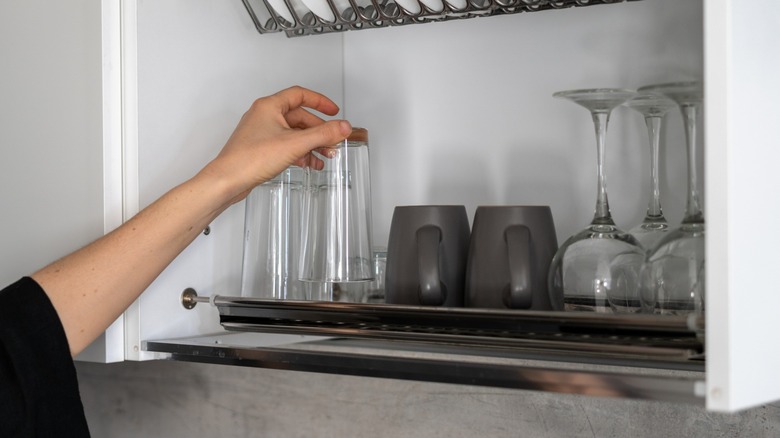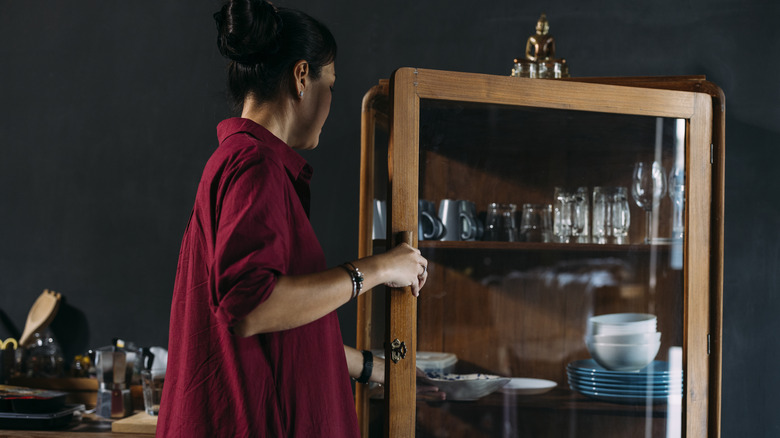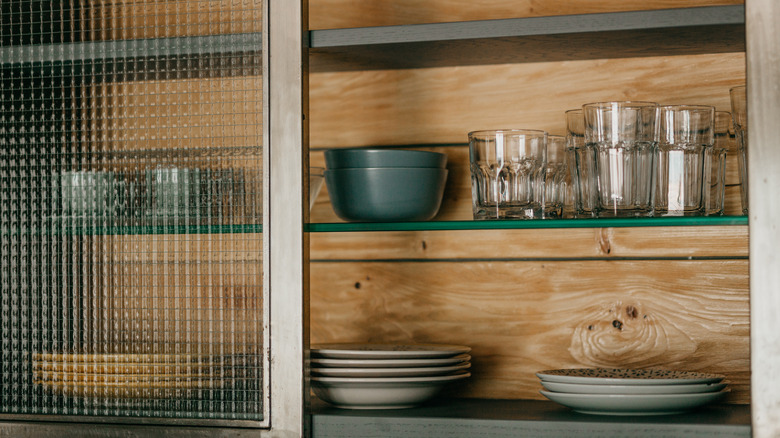When To Store Glasses Facing Up Vs Down: The Debate Explained
To some, glassware is nothing more than a vessel to contain their drink of choice. To others, specificity is a matter of great importance, as many glasses not only have distinct functions — such as the various roles of beer glasses – but also serve as a means of expressing one's aesthetic personality. But whether you use just about any glass for any job or you think drinking Champagne from flutes is the absolute worst, you no doubt fall on one side of the great glassware storage debate.
Do you store your glasses bottom-side-up or bottom-side-down? If you're like most people, you probably have a set way that you keep it. In a 2022 reader poll conducted on Instagram for Martha Stewart, more than 10,000 people answered how they stored their glasses, with roughly 53% of respondents storing them with the rim-up and around 47% choosing rim-down. So, is there a true "correct" way that can end all this bickering? With a relatively even split, it's clear the answer is still up for debate. With glassware storage, there are several factors that may influence your decision.
Storing glasses facing down is a matter of cleanliness
Everyone loves a perfectly clean, sparkling glass. You might even be the kind of person who removes every little bit of a label or sticker from your glassware. So the last thing you want is for your cups, mugs, and the like to accumulate dust and dirt between uses. If you wish to avoid such a fate, consider storing your glassware upside down.
Dust, sadly, is pretty much unavoidable no matter where you are in your household. Keeping your glasses in a cabinet or sideboard helps to drastically limit the dirt that gets in/on them, meaning storing face-up isn't usually a problem there. Still, even closed-door storage options aren't completely dust-proof, so for glassware that you use infrequently (which will get dirtier over time), storing face-down will help prevent dust from collecting.
If you don't have cabinets and instead use open shelves, the prospect of dusty drinkware becomes a much bigger concern. In this case, your best course of action would be to store all of your glasses with the rim down. If space is an issue, thicker glasses with sturdier rims can be stacked on top of each other this way, freeing up additional room in your cabinets or on your shelves.
The argument for storing your glasses facing up
Meanwhile, proponents of face-up storage may rebut the face-down argument by pointing out that dust shouldn't be much of a problem if you use your glasses with some degree of regularity. There's also the fact that lots of drinking glasses are bottom-heavy, with the most fragile part typically being the rim. This means that storing them face-down might bring with it the added risk of chipping, given the extra stress being put on the rim — and from both a functionality and aesthetic standpoint, you really don't want that.
Where, then, does that leave us? The happy middle ground seems to be that if you're not using a particular kind of glass very often, or if it's fairly sturdy at the rim, face-down storage is your best option if you're concerned about keeping dust out. Face-up storage, meanwhile, is ideal for glasses in heavy use or for extra-fragile numbers that need a little more care. Ultimately, though, there are advantages and drawbacks to both methods, so it's best to use whichever you think is most fitting based on the situation.


